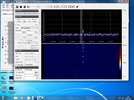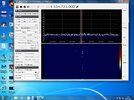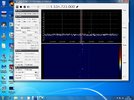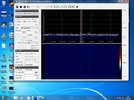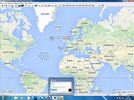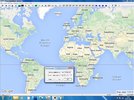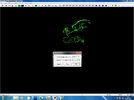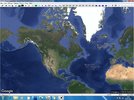Installed the new Titanium C1PLL ...and tested it with SDR# ..
What have a learned so far ..
Signals are more pronounced and the background noise is much reduced ..
The signals really 'pop' out now ...so perhaps the old C1PLL was not working as well as it could.
I can now use this PLL combo with SDR# ...which means I can perhaps try for 2 x channels ?
But to the main question ...the very evisent drift ..
Well ..there were 2 possibilites ..SDRplay thermal drift ..or LNB drift..
Removed the SDR play and lifted it clear of the Optiplex ..so not affected by internal heat sources ..and powered up the PC and ran up SDR# ..
Switched on the C-band lnb ...and took my first screen grab at 19:05 ...
It was immediately apparent I was in the right spectral region ...
I then took further screen images at 19:15 ...then 19:30 and lastly 20:00
a tiny drift was evident but not enough to be an issue ..
This was NOT the case with the ESX non Pll ..which powered up miles off target ..and drifted quite substantially over time...
See for yourself with the 4 images ...
So imo PLL is important..
BUT ..this is not the end of the story ...
without powering anything down I re-buried the SDRplay under the DVD drive and directly on to of the Optiplex hard drive ...thus will inevitably get warm ..
That was at 20:15 ...and it is now 20:40 ..
Unsurprisingly the chosen frequency has drifted ..but Surprisingly is still within the correct region of the spectrum ...
The amount drifted is roughly so far is about the width of one of aero data burst streams ..
So ..my thoughts on this ..errr...problem .
Well I can't keep the SDRplay unit cool ...but what I can do is rely on the sandwiched position and the heat from the hard drive to stabilise the SDRplay once the PC has been on for about 10 minutes.
..thus hopefully preventing SDRplay vxo drift of huge proportion once the pcs internal temerature reaches optimum.
What I can say is that imo the largest problem of the 2 was indeed the LNB ..and that PLL IS important to this particular experiment.
rgds
VS
